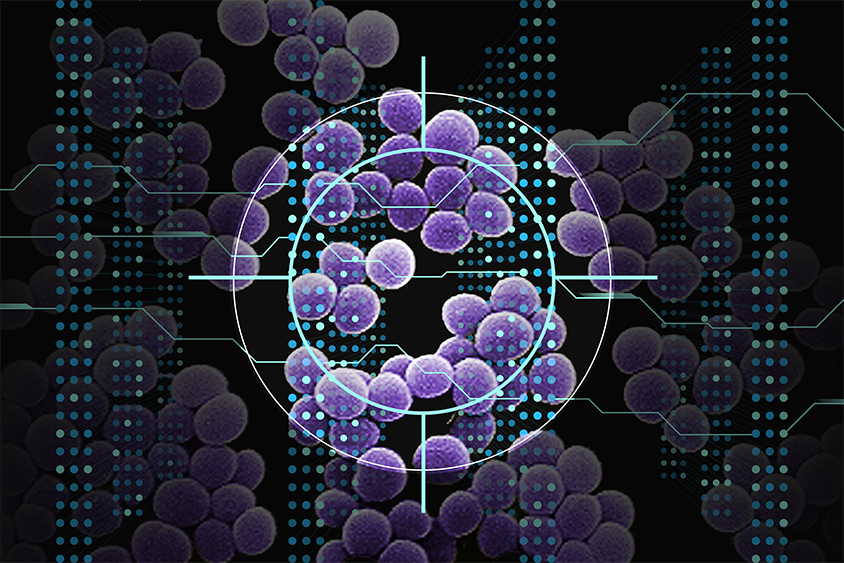An important step in addressing the antimicrobial resistance (AMR) challenge has been taken with the use of artificial intelligence (AI) machine learning to develop a new class of antibiotics to treat drug-resistant staph infections for the first time in more than 60 years.
Researchers at the Massachusetts Institute of Technology (MIT), Harvard University, and the Broad Institute of MIT and Harvard in Cambridge, Massachusetts, used artificial intelligence and machine learning to make this significant finding that will improve global health care.
One major global cause of death and a hazard to public health is antibiotic resistance. The Review on Antimicrobial Resistance report, which was commissioned by the UK Government, projects that 10 million people will die each year from AMR by the year 2050.
A 2019 study published in The Lancet estimated that 1.27 million fatalities worldwide were directly caused by antimicrobial resistance and 4.95 million deaths were linked to bacterial resistance to antibiotics. According to the U.S. Centers for Disease Control’s 2019 report, Antibiotic Resistance Threats in the United States, there are over 2.8 million antimicrobial-resistant illnesses and 35,000 related fatalities in the country each year.
Antimicrobials, which include antibiotics, antifungals, antivirals, and antiparasitics, are compounds that either eliminate or stop the growth of bacteria. Antimicrobial resistance (AMR) is the result of microbial mutation or adaptation, which renders antimicrobials inactive. Inappropriate or excessive use can hasten this natural process, which leads to dangerous bacteria, fungi, viruses, and parasites becoming resistant to antibiotics and antimicrobial drugs.
Drug-resistant bacterial strains are a result of various factors, such as the overprescription of antibiotics for human use and their excessive usage in animal feed. A Review of Antibiotic Use in Food Animals: Perspective, Policy, and Potential by Landers et al. states that antibiotics like tetracyclines or tylosin are fed to 88% of swine, tylosin is fed to 42% of beef calves, and almost all dairy cows receive prophylactic doses of antibiotics such as beta-lactams, cephalosporins, or penicillins after lactation.
The World Health Organization (WHO) reported in its 2022 Global Antimicrobial Resistance and Use Surveillance System (GLASS) report that the median rate for methicillin-resistant Staphylococcus aureus and third-generation cephalosporin-resistant Escherichia coli (E. coli) in 76 countries is 35% and over 40%, respectively.
Staphylococcus aureus, or Staph for short, is a Gram-positive bacteria that causes a wide range of illnesses in humans, including fatal pneumonia, sepsis, and skin infections. Over 120,000 deaths globally were attributed to methicillin-resistant S. aureus (MRSA) in 2019, according to a January 2022 research by the Institute for Health Metrics and Evaluation.
This study shows that graph-based searches for chemical substructure rationales that repeat model predictions can help us better understand and explain graph neural networks. co-authors of the paper James Collins, Ph.D., an MIT professor, wrote.
Chemprop is an AI platform designed for graph neural networks (GNNs), which the scientists used. The chemical bond and atom information of each molecule is used by the AI graph neural networks to generate predictions. Graph neural networks refer to artificial neural networks that are capable of processing graph data structures for various purposes such as analysis, classification, and prediction.
The new study’s intriguing implication is that deep learning models for drug discovery can be made explicable, according to the authors.
After screening more than 39,300 compounds for S. aureus RN4220, a methicillin-susceptible strain, the scientists identified 512 active candidate compounds. Using the screening data, AI graph neural network ensembles were trained to predict, from the atoms and bonds of a compound’s molecular chemistry, whether or not it suppresses bacterial growth.
Eliminating substances that are hazardous to or may harm human cells is a crucial part of the drug-discovery process. In order to predict cytotoxicity as well, the researchers counter-screened the training database containing more than 39,300 compounds. They counter-screened for cytotoxicity in human liver cancer cells (HepG2) in order to comprehend both liver toxicity and general cell toxicity. The researchers counter-screened human primary skeletal muscle cells (HSkMCs) and human lung fibroblast cells (IMR-90) to get insights regarding in vivo cell toxicity.
Out of the 512 active antibacterial candidate compounds, 40 percent showed cytotoxicity based on the orthogonal models used to predict cytotoxicity. This means that 306 compounds did not exhibit any cytotoxicity for the three cell types that were screened.
The researchers then used all of the training databases to retrain ensembles of 20 AI models, creating four AI ensembles that could forecast the cytotoxicity and antibiotic capabilities of the three different cell types (HepG2, HSkMCs, and IMR-90). Over 12 million compounds were fed into these four AI ensembles as input data, with over 11.2 million coming from the Mcule commercialized database and over 799,000 from a Broad Institute database.
Following additional screening, 283 compounds were selected by the researchers and tested for experimental growth suppression against MRSA in a laboratory setting. Two antibiotic candidate compounds were found as a result, and mice were used for testing.
As stated by Collins and colleagues,
A number of compounds having antibiotic action against S. aureus were identified by this approach. Out of all of them, they discovered that one structural class is highly selective, capable of defeating resistance, with advantageous chemical and toxicological qualities, and efficacious when used topically and systemically to treat MRSA in mouse infection models.








